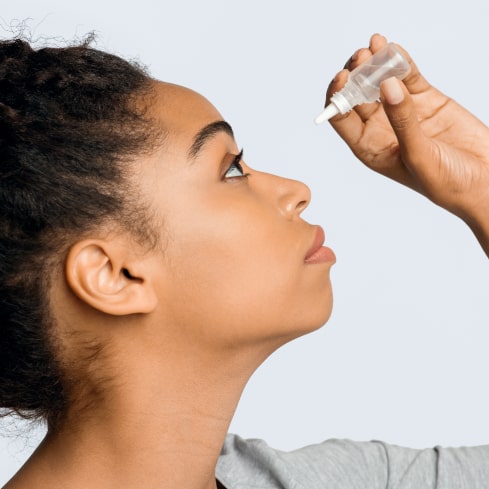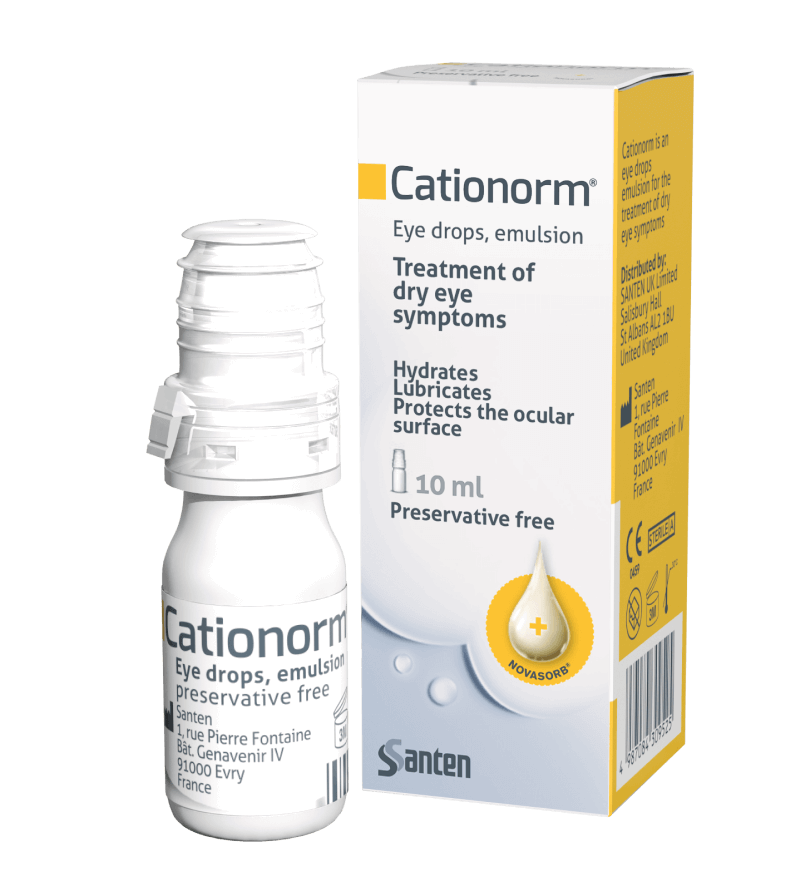Flinching, blinking, watering and twitching are common reactions to putting in eye drops, particularly if you’re not experienced at it. But don’t blame yourself, it’s only natural. The body’s instinct is to protect the eyes when something is falling towards them and while that may be helpful if you’re in a sandstorm, it’s frustrating if you’re trying to put eye drops in.
If a wet face, streaming eyes and wasted medication are familiar, read on as we reveal an easier way to get you popping your drops in like a pro.
Best way to put in eye drops
Step 1: Practice good hygiene (washing is not optional)1
You may think that cleaning your hands first is a nice optional extra, but trust us, it’s worth the extra effort. Your eyes are complex and highly sensitive, making them more susceptible to damage and infection. When you think about how precious they are, it’s a no-brainer to do everything in your power to keep them safe.
Wash your hands with warm soapy water to remove dirt, viruses and bacteria. Do it thoroughly for at least 20 seconds then dry them with a clean towel. No sink nearby? Then use hand sanitiser instead.2
It’s also worth checking your nails are smooth and clean too – nicking your eyes with a rough edge is no fun!
First, make sure you are holding the bottle correctly. Hold the bottle between your thumb and middle finger and place your index finger close to the top of the bottle, taking care not to touch the tip of the bottle as this can contaminate the drops.
At this stage, check the bottle tip to make sure it’s clean and if it’s not, it’s time to throw it away and replace the bottle.
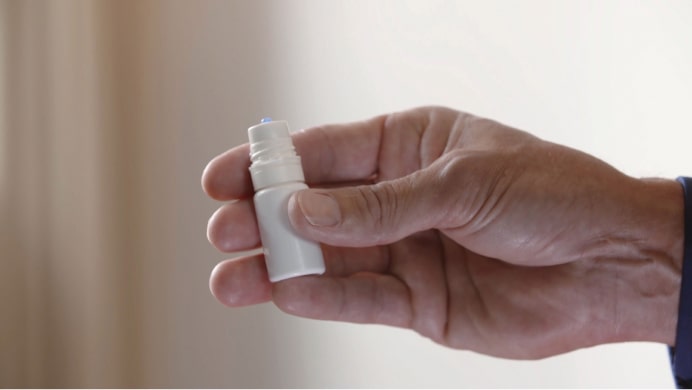
Step 2: Go with gravity and tilt backwards
It sounds obvious, but tilting your head backwards is by far the easiest way to apply eye drops, letting gravity guide the solution to the eye’s surface.2 The tilting part can be trickier for some people. If you’ve got good balance then doing it standing is fine, but for the more wobbly among us, try sitting or even lying down.2
In fact, doing it in bed is our top tip – you won’t have to crunch your neck (useful if you have tense or less flexible muscles) and you’re in a relaxed position. What’s more, some people’s eyes can be driest in the mornings, so working it into your waking-up routine has added benefits.3
Step 3: Pull your lower lid down and look up
This pro technique uses just one finger (index on the opposite hand you use for writing): Just below the centre of your lower lid, gently pull down to form a small ‘pocket’.1 Look at the bottle tip as you do this.
Why use your non-dominant hand? Your weaker hand will likely be gentler on your delicate eyelids and crucially it frees up your writing (dominant) hand for handing the eye drop bottle.
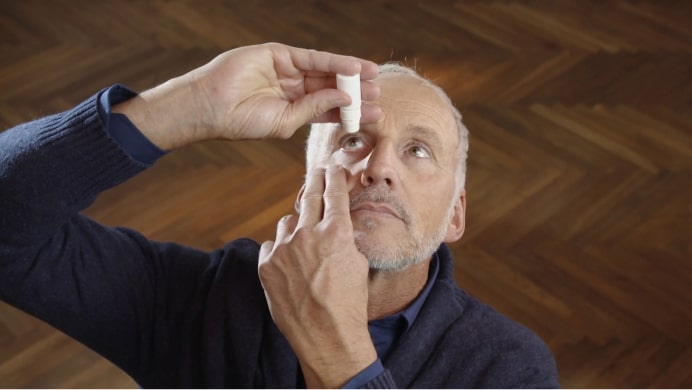
Step 4: Fill your pockets
Remember the pocket you made by pulling down on your lower eyelid? Now it’s time to fill it. Squeeze the bottle gently and release a single drop.2 Repeat this process with your other eye, if instructed to do so by your doctor.
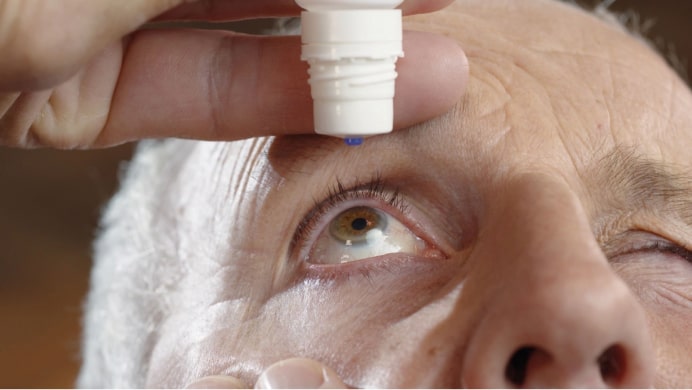
Remember how we told you to hold the bottle correctly? Well, this means that your index finger is free to use for guidance! Rest your index finger against your eyebrow or bridge of your nose. This will help to align with the tip of the bottle with your eye and will keep your hand stable.
Step 5: Close, don’t blink or squeeze
Resist the urge to blink! Simply close the eye for a few minutes and tilt your face downwards.2 Softly press your fingers into the inner corners of your eyes for around 2 minutes. This prevents the solution draining into the tear ducts.1 Don’t squeeze the eyes shut tightly, just do it gently and avoid moving the eyeball around. This allows the eye drop to evenly distribute over the surface of the eye and absorb.
Step 6: Clean up but don’t contaminate
Chances are, you may have a bit of extra solution that’s leaked out the eye. That’s natural and completely fine. Just take a clean tissue or towel and gently dab it away. You’ll also want to wash your hands again.
Don’t be tempted to clean or touch the tip of your eye bottle though as you could risk getting water inside or contaminating the medication – it’s OK to just to put the lid on.
Store it somewhere cool and dry, as directed by the manufacturer.2
What next?
If you need to do the other eye, it’s best to wait 5 – 10 minutes before applying the next drops.4 That way you’ll avoid having two blurry eyes while you’re waiting for the drops to be
absorbed!
Even more tips
- If you’re applying drops and ointment at the same time, make sure to use the drops
first - Check the expiration date of your eye drops or ask your pharmacist how long you can use them once opened2
- Never share your eye drops with another person2
- But it’s OK to ask another person for help to apply your eye drops if you’re struggling
- If you usually wear contact lenses, make sure you remove them before applying eye drops, unless your doctor or pharmacist advises otherwise.1, 2
It’s well worth taking the time to learn how to put eye drops in correctly – in the long run, it’ll save you time, hassle and wasted medication. After using this technique a few times, you’ll find it fast and easy to do – no more dreading your eye drops!
Frequently asked questions
Should I blink after eye drops?
No, the best way of ensuring your medication is absorbed is to keep your eyes closed for a few minutes. It might help to gently massage your closed eyelid with a finger.
How many times a day can I use eye drops?
You should always follow the instructions that come with the drops and the advice of your doctor or optician.
Generally, eye drops with preservatives can only be used four times in one day.4 If you think you will need more than four doses, you should opt for preservative-free eye drops.
When should I apply my eye drops?
Eye drops can be taken at any time, but it’s important to stick to a routine to make sure you don’t miss a dose. It might help to associate your eye drops with another habit. For example, first thing in the morning when you wake up, or if you take twice-a-day eye drops, think if there is anything else you do twice a day (like walk the dog) that might remind you to take them.
Be aware that certain types of eye medications, like ointments, can lead to temporarily blurred vision, so it is best to take these just before you go to sleep.
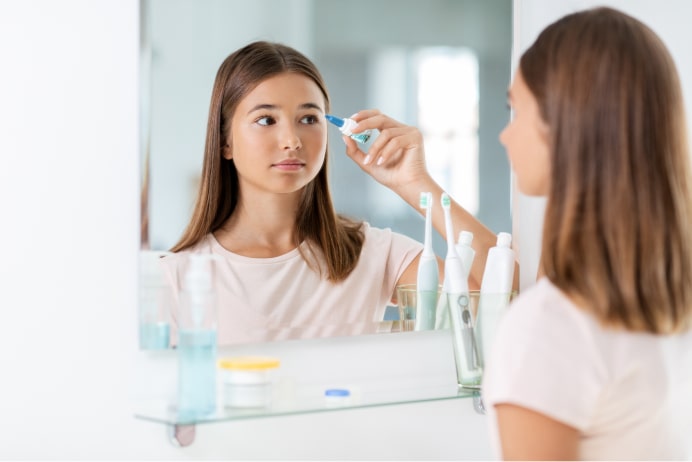
Why do my eyes hurt when I put in eye drops?
Some eye drops can cause some discomfort after you put them in, but this is usually very mild and only lasts a few minutes. Read the instructions to see if that is listed as a side-effect for your particular drops.
If the pain doesn’t go away after fifteen minutes, or if it gets increasingly worse, contact your doctor immediately.
What are the benefits of eye drops?
Eye drops are a great way of delivering medication directly into the eye exactly where it’s needed.
For example, artificial tear eye drops such as Cationorm® are used to soothe dry eyes, providing lubrication and increasing comfort. Anti-allergic drops help prevent or lessen the stinging feeling that is so rampant during hay fever season. And in the case of glaucoma, prescribed medicated drops can reduce the risk of vision loss and blindness, by relieving the pressure inside the eye.


